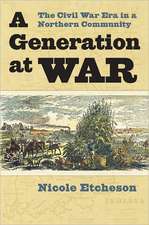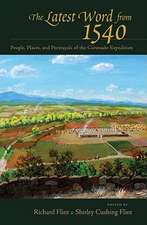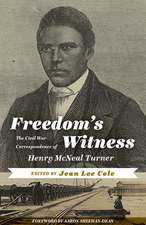An Appalachian Reawakening: West Virginia and the Perils of the New Machine Age, 1945-1972: WEST VIRGINIA & APPALACHIA
Autor Mr. JERRY B. THOMASen Limba Engleză Paperback – noi 2010
As the long boom of post-World War II economic expansion spread across the globe, dreams of white picket fences, democratic ideals, and endless opportunities flourished within the United States. Middle America experienced a period of affluent stability built upon a modern age of industrialization. Yet for the people of Appalachia, this new era brought economic, social, and environmental devastation, preventing many from realizing the American Dream. Some families suffered in silence; some joined a mass exodus from the mountains; while others, trapped by unemployment, poverty, illness, and injury became dependent upon welfare. As the one state most completely Appalachian, West Virginia symbolized the region's dilemma, even as it provided much of the labor and natural resources that fueled the nation's prosperity.
An Appalachian Reawakening: West Virginia and the Perils of the New Machine Age, 1945-1972 recounts the difficulties the state of West Virginia faced during the post-World War II period. While documenting this turmoil, this valuable analysis also traces the efforts of the New Frontier and Great Society programs, which stimulated maximum feasible participation and lead to the ultimate rise of grass roots activities and organizations that improved life and labor in the region and undermined the notion of Appalachian fatalism.
An Appalachian Reawakening: West Virginia and the Perils of the New Machine Age, 1945-1972 recounts the difficulties the state of West Virginia faced during the post-World War II period. While documenting this turmoil, this valuable analysis also traces the efforts of the New Frontier and Great Society programs, which stimulated maximum feasible participation and lead to the ultimate rise of grass roots activities and organizations that improved life and labor in the region and undermined the notion of Appalachian fatalism.
| Toate formatele și edițiile | Preț | Express |
|---|---|---|
| Paperback (1) | 150.26 lei 6-8 săpt. | |
| West Virginia University Press – noi 2010 | 150.26 lei 6-8 săpt. | |
| Hardback (1) | 400.43 lei 3-5 săpt. | |
| West Virginia University Press – 31 oct 2010 | 400.43 lei 3-5 săpt. |
Din seria WEST VIRGINIA & APPALACHIA
-
 Preț: 158.10 lei
Preț: 158.10 lei -
 Preț: 210.64 lei
Preț: 210.64 lei -
 Preț: 240.00 lei
Preț: 240.00 lei -
 Preț: 181.23 lei
Preț: 181.23 lei -
 Preț: 141.70 lei
Preț: 141.70 lei -
 Preț: 164.10 lei
Preț: 164.10 lei -
 Preț: 168.42 lei
Preț: 168.42 lei -
 Preț: 147.17 lei
Preț: 147.17 lei - 11%
 Preț: 392.20 lei
Preț: 392.20 lei -
 Preț: 148.11 lei
Preț: 148.11 lei -
 Preț: 170.92 lei
Preț: 170.92 lei -
 Preț: 148.90 lei
Preț: 148.90 lei -
 Preț: 149.12 lei
Preț: 149.12 lei -
 Preț: 148.98 lei
Preț: 148.98 lei -
 Preț: 147.48 lei
Preț: 147.48 lei -
 Preț: 158.40 lei
Preț: 158.40 lei - 11%
 Preț: 435.10 lei
Preț: 435.10 lei -
 Preț: 143.99 lei
Preț: 143.99 lei -
 Preț: 154.41 lei
Preț: 154.41 lei -
 Preț: 214.00 lei
Preț: 214.00 lei -
 Preț: 196.29 lei
Preț: 196.29 lei -
 Preț: 196.29 lei
Preț: 196.29 lei
Preț: 150.26 lei
Nou
Puncte Express: 225
Preț estimativ în valută:
28.75€ • 30.75$ • 23.97£
28.75€ • 30.75$ • 23.97£
Carte tipărită la comandă
Livrare economică 18 aprilie-02 mai
Preluare comenzi: 021 569.72.76
Specificații
ISBN-13: 9781933202587
ISBN-10: 1933202580
Pagini: 352
Dimensiuni: 152 x 229 x 28 mm
Greutate: 0.64 kg
Ediția:1st Edition
Editura: West Virginia University Press
Colecția West Virginia University Press
Seria WEST VIRGINIA & APPALACHIA
ISBN-10: 1933202580
Pagini: 352
Dimensiuni: 152 x 229 x 28 mm
Greutate: 0.64 kg
Ediția:1st Edition
Editura: West Virginia University Press
Colecția West Virginia University Press
Seria WEST VIRGINIA & APPALACHIA
Recenzii
“Thoroughly researched and well written . . . . an excellent work.” Thomas Kiffmeyer, Professor of American History, Morehead State University
“....a well-written narrative that will fill a gaping hole in West Virginia historiography.” Kevin Barksdale, Assistant Professor of American History, Marshall UniversityNotă biografică
Jerry Bruce Thomas is Professor Emeritus of History at Shepherd University. He earned a BA in political science at West Virginia University and, after Peace Corps service in the Dominican Republic, an M.A. and Ph.D. in history from the University of North Carolina at Chapel Hill. He is also the author of An Appalachian New Deal: West Virginia in the Great Depression, published in paperback March 2010 by WVU Press.
Textul de pe ultima copertă
As the long boom of post-World War II economic expansion spread across the globe, dreams of white picket fences, democratic ideals, and endless opportunities flourished within the United States. Middle America experienced a period of affluent stability built upon a modern age of industrialization. Yet for the people of Appalachia, this new era brought economic, social, and environmental devastation, preventing many from realizing the American Dream. Some families suffered in silence; some joined a mass exodus from the mountains; while others, trapped by unemployment, poverty, illness, and injury became dependent upon welfare. As the one state most completely Appalachian, West Virginia symbolized the region's dilemma, even as it provided much of the labor and natural resources that fueled the nation's prosperity.
An Appalachian Reawakening: West Virginia and the Perils of the New Machine Age, 1945-1972 recounts the difficulties the state of West Virginia faced during the post-World War II period. While documenting this turmoil, this valuable analysis also traces the efforts of the New Frontier and Great Society programs, which stimulated maximum feasible participation and lead to the ultimate rise of grass roots activities and organizations that improved life and labor in the region and undermined the notion of Appalachian fatalism.
An Appalachian Reawakening: West Virginia and the Perils of the New Machine Age, 1945-1972 recounts the difficulties the state of West Virginia faced during the post-World War II period. While documenting this turmoil, this valuable analysis also traces the efforts of the New Frontier and Great Society programs, which stimulated maximum feasible participation and lead to the ultimate rise of grass roots activities and organizations that improved life and labor in the region and undermined the notion of Appalachian fatalism.
Cuprins
Acknowledgments Introduction A New Machine Age in the Hills American Paradox, Appalachian Stereotype Civil Rights in the New Machine Age Good Intentions: The New Frontier and the War on Poverty Raising Hell in the Hills and Hollows: AVs, VISTAs, and Community Action From the Silver Bridge to Farmington and Rumblings at the Grassroots The Black Lung Association, Miners for Democracy, and the New Feminism The Strip Mining Dilemma and a Climactic Debate Buffalo Creek: Appalachian Apotheosis Epilogue: Another Reawakening? Notes Bibliography Index
Descriere
As the long boom of post-World War II economic expansion spread across the globe, dreams of white picket fences, democratic ideals, and endless opportunities flourished within the United States. Middle America experienced a period of affluent stability built upon a modern age of industrialization. Yet for the people of Appalachia, this new era brought economic, social, and environmental devastation, preventing many from realizing the American Dream. Some families suffered in silence; some joined a mass exodus from the mountains; while others, trapped by unemployment, poverty, illness, and injury became dependent upon welfare. As the one state most completely Appalachian, West Virginia symbolized the region's dilemma, even as it provided much of the labor and natural resources that fueled the nation's prosperity.
An Appalachian Reawakening: West Virginia and the Perils of the New Machine Age, 1945-1972 recounts the difficulties the state of West Virginia faced during the post-World War II period. While documenting this turmoil, this valuable analysis also traces the efforts of the New Frontier and Great Society programs, which stimulated maximum feasible participation and lead to the ultimate rise of grass roots activities and organizations that improved life and labor in the region and undermined the notion of Appalachian fatalism.
An Appalachian Reawakening: West Virginia and the Perils of the New Machine Age, 1945-1972 recounts the difficulties the state of West Virginia faced during the post-World War II period. While documenting this turmoil, this valuable analysis also traces the efforts of the New Frontier and Great Society programs, which stimulated maximum feasible participation and lead to the ultimate rise of grass roots activities and organizations that improved life and labor in the region and undermined the notion of Appalachian fatalism.













